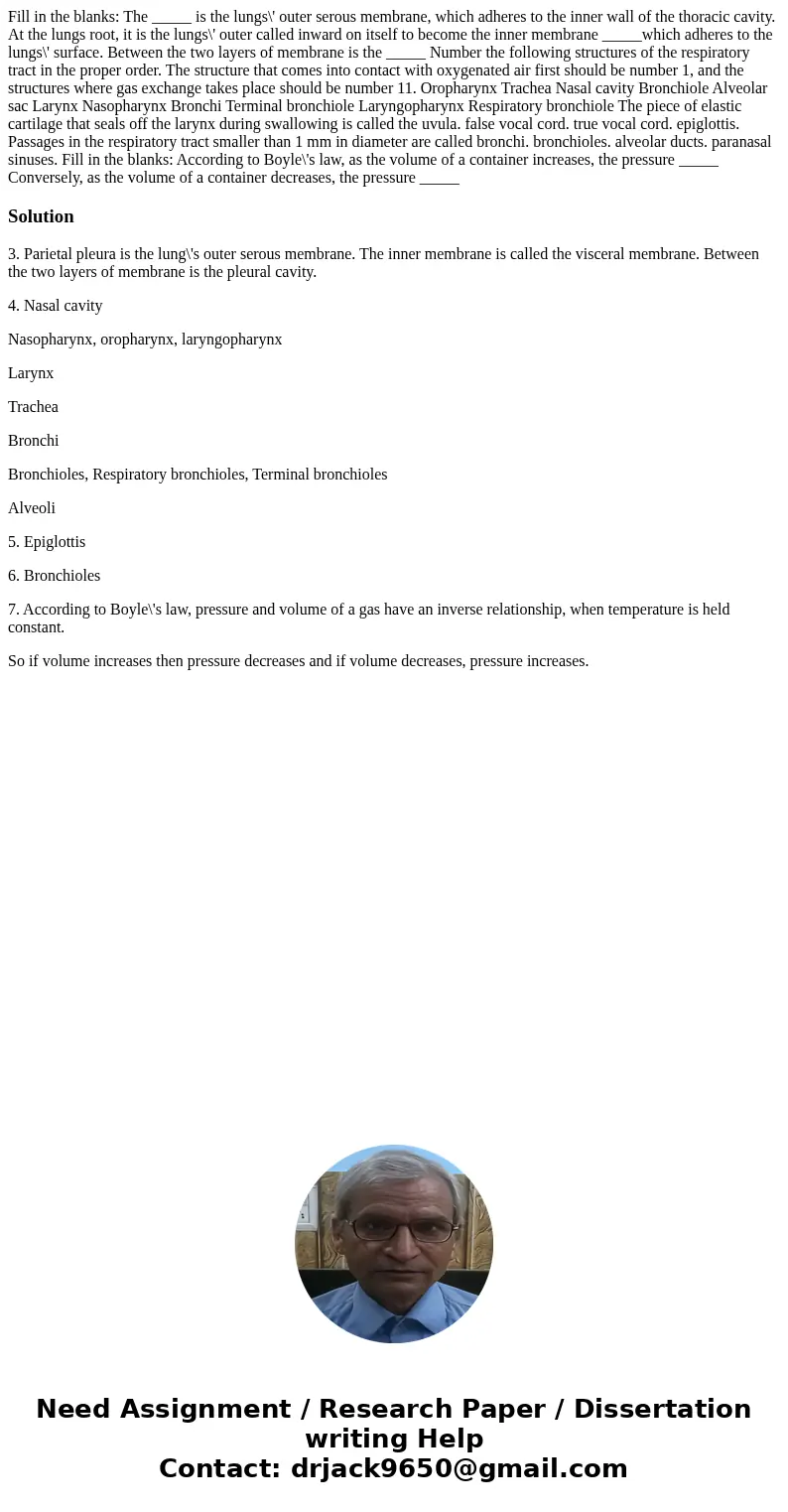Fill in the blanks The is the lungs outer serous membrane w
Fill in the blanks: The _____ is the lungs\' outer serous membrane, which adheres to the inner wall of the thoracic cavity. At the lungs root, it is the lungs\' outer called inward on itself to become the inner membrane _____which adheres to the lungs\' surface. Between the two layers of membrane is the _____ Number the following structures of the respiratory tract in the proper order. The structure that comes into contact with oxygenated air first should be number 1, and the structures where gas exchange takes place should be number 11. Oropharynx Trachea Nasal cavity Bronchiole Alveolar sac Larynx Nasopharynx Bronchi Terminal bronchiole Laryngopharynx Respiratory bronchiole The piece of elastic cartilage that seals off the larynx during swallowing is called the uvula. false vocal cord. true vocal cord. epiglottis. Passages in the respiratory tract smaller than 1 mm in diameter are called bronchi. bronchioles. alveolar ducts. paranasal sinuses. Fill in the blanks: According to Boyle\'s law, as the volume of a container increases, the pressure _____ Conversely, as the volume of a container decreases, the pressure _____
Solution
3. Parietal pleura is the lung\'s outer serous membrane. The inner membrane is called the visceral membrane. Between the two layers of membrane is the pleural cavity.
4. Nasal cavity
Nasopharynx, oropharynx, laryngopharynx
Larynx
Trachea
Bronchi
Bronchioles, Respiratory bronchioles, Terminal bronchioles
Alveoli
5. Epiglottis
6. Bronchioles
7. According to Boyle\'s law, pressure and volume of a gas have an inverse relationship, when temperature is held constant.
So if volume increases then pressure decreases and if volume decreases, pressure increases.

 Homework Sourse
Homework Sourse